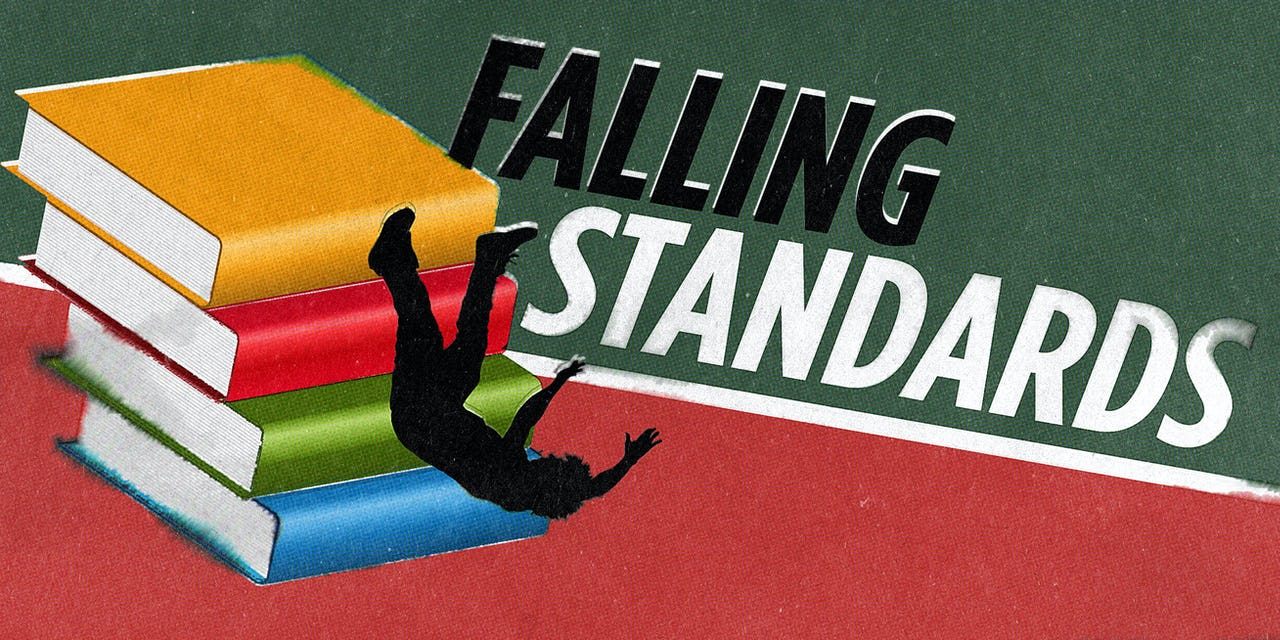
School Shutdowns Have Cost Literacy
By EMMY GRIFFIN February 28, 2022 in Education
The loss of in-person learning, prolonged screen time, and the addition of masking have handicapped early readers.
Since the lockdowns in 2020, reading readiness in the early grades (kindergarten-2nd grade) have taken a huge hit. According to stats obtained by The Wall Street Journal: “Before the pandemic, 55% of kindergartners were on track in reading skills. That fell to 37% in 2020–2021 and 47% this school year. The year before the pandemic, only 29% of kindergartners were deemed ‘far behind’ in early literacy skills. That rose to 47% and 37% the first and second year of the pandemic.”
I have taught this age group for most of my teaching career. Teaching literacy is a challenge even at the best of times. But throw in the chaos of virtual school and masking and you have a recipe for disaster.
What sort of literacy learning goes on in kindergarten?
Children of kindergarten age are just starting to learn to read and write. It’s more rare than not to have a kindergartener already reading when he or she starts the school year. Kindergarteners are learning letter-sound correlation (i.e. the symbol “A” or “a” says “ahh” and so on and so forth). By the end of the year, most kindergarteners are reading short consonant-vowel-consonant words (cat, dog, mop). They also will be able to recognize and read at least 50+ sight words (words that are common but don’t necessarily follow the rules; they are also known as high frequency words). All these reading lessons hopefully culminate in the kindergartener being able to read simple short books by the end of the year (think Bob Books).
On the writing end, they will be able to write all the letters of the alphabet, both upper and lower case. They are starting to use their knowledge of letters and their sounds to begin writing words (usually the spelling is creative and phonetic; i.e. the word “think” might be spelled “fink”). By the end of the school year, the goal is generally to have kindergarteners be able to write short sentences.
This is just the beginning of learning literacy. First and second grade build on these foundational skills. By third grade, a child should be reading independently at or above their grade level.
This cannot be achieved effectively when students are virtual learning.
Virtual learning for children at this age is akin to herding cats. They require a lot of help simply to log on to school. Then you add in all the other difficulties inherent to online school: mute/unmute, potty breaks or play breaks when they feel like it, and technical issues. Some students with learning difficulties like dyslexia and dysgraphia already have a hard time learning with black words on white paper. Add in the incessant blue light from their iPad or computer screen and you get a child that is very quickly tired, headachy, and unhappy. Worst of all is the the social disconnect that virtual learning provides. Virtual class pales in comparison to seeing your teacher read in person as well as interacting with and being challenged by your peers. As a result, it can be difficult for students to find any enjoyment in school.
Literacy also cannot be achieved effectively when students are in-person learning but have to mask and social distance.
Masks and social distancing are the most harmful culprits of all. Imagine trying to learn letters and the sounds that go with them through a mask. Imagine trying to sound out words to write them down when you can’t properly hear them. Imagine trying to play and/or read with your peers but from six feet apart. Do you think this would make for successful literacy acquisition in students?
It’s not only the early grades that have suffered. Children ages 1-3 who are learning to speak are also struggling due to masking. Speech therapists have seen an uptick in the normal amount of children with speaking difficulties. The CDC even sneakily tried to hide the evidence of the language learning delays by changing the standards for speaking in young children. The CDC knows that masks are harmful to children who are learning to speak, read, and write. But they were politically expedient.
With the official lifting of the masks by the CDC ahead of President Joe Biden’s State of the Union Address, it’s obvious that all the extreme measures such as lockdowns, social distancing, and masking were more about power grabbing than about keeping us safe. At the end of the day, children have been the biggest victims of these bad policies.
~~~
~~Reprinted with permission. See the original article here and leave some comments!
By EMMY GRIFFIN February 28, 2022 in Education The loss of in-person learning, prolonged screen time, and the addition of masking have handicapped early readers. Since the lockdowns in 2020, reading readiness in the early grades (kindergarten-2nd grade) have taken a huge hit. According to stats obtained by The Wall Street Journal: “Before the pandemic, 55% of…
By EMMY GRIFFIN February 28, 2022 in Education The loss of in-person learning, prolonged screen time, and the addition of masking have handicapped early readers. Since the lockdowns in 2020, reading readiness in the early grades (kindergarten-2nd grade) have taken a huge hit. According to stats obtained by The Wall Street Journal: “Before the pandemic, 55% of…